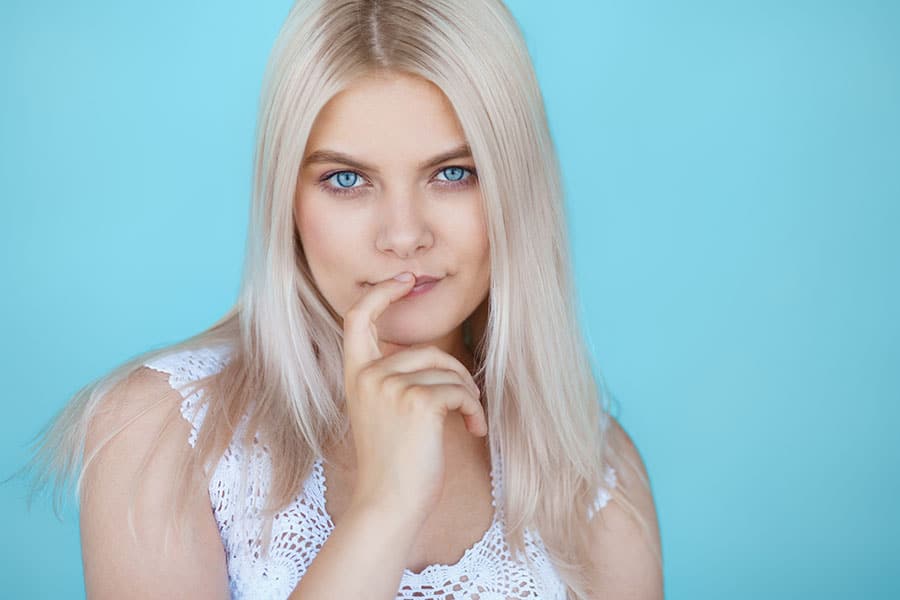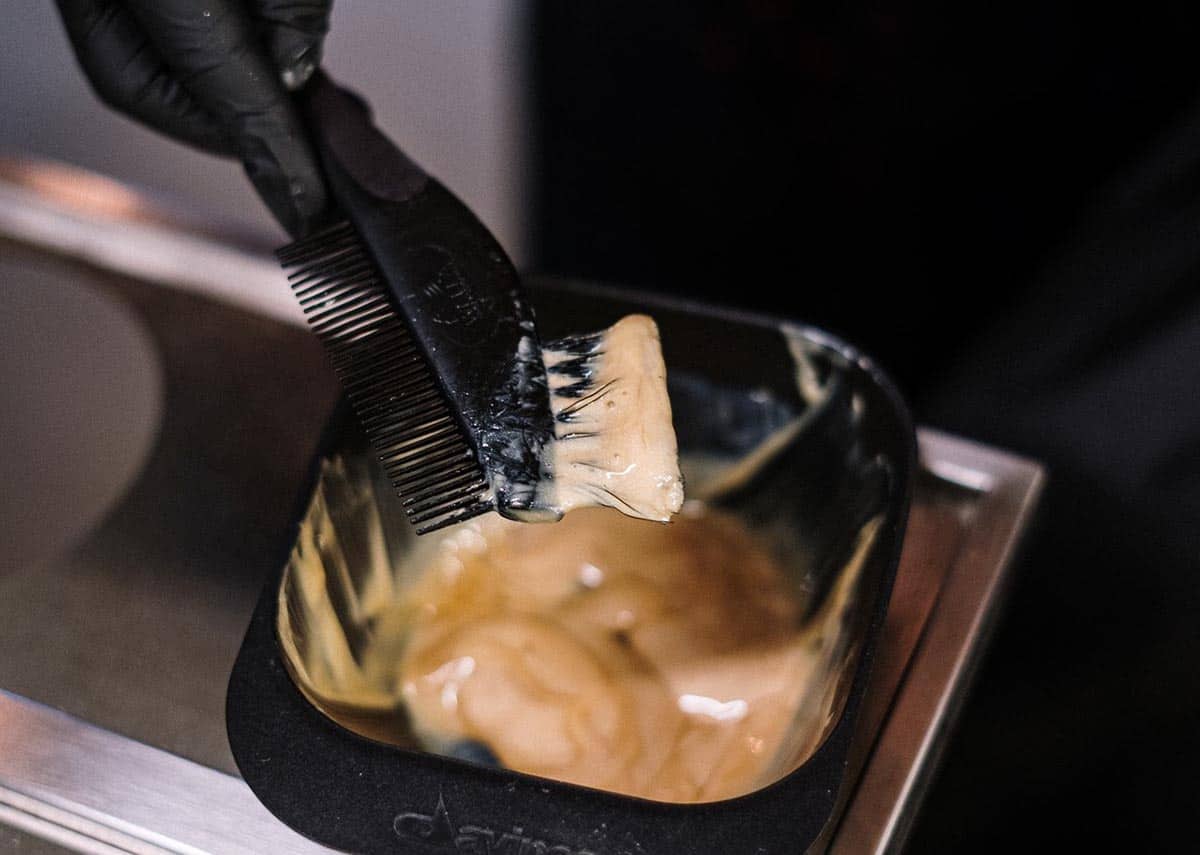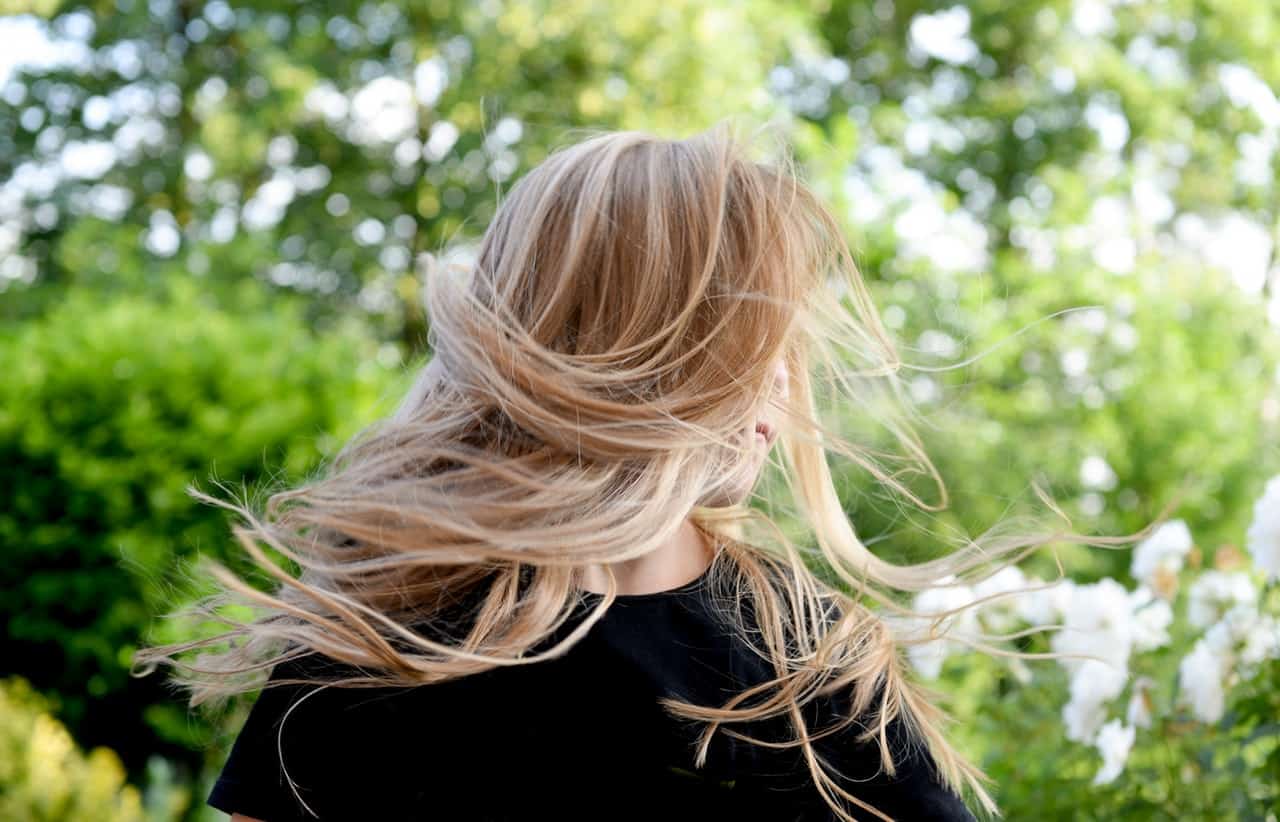You’ve just bleached your hair. Now you are wondering how long to wait between bleaching sessions.
If you’ve heard all kinds of stories about people who lost their hair after a bleaching session, you’re probably scared to death just by thinking of this procedure. However, the only way to lighten your hair before you dye it is with this technique, and sometimes it requires more than one session.
Should you wait a week or two between two bleaching sessions or maybe even more? Is it acceptable to bleach your hair twice in one week? If these are some of the questions you’ve had, then you’ve come to the right place.
In this short guide, I’ll talk all about bleaching, what this procedure includes, how long you should wait between two appointments, and what factors will influence your decision. Treating your hair with a bleaching agent can be a life-changing decision; that’s why you should read the entire blog for best results!
Table of Contents
What Is Bleaching?
We have to talk a little more in-depth about the bleaching process before we answer the question ‘How long should you wait to bleach your hair again?’ Not everyone is familiar with how this method works and how damaging it can be to their hair.
Even though the effects are satisfying, bleaching is an aggressive procedure that uses harsh chemicals to lighten your hair. It’s a technique that removes the melanin pigments from the hair, leading to a much lighter appearance that can later be treated with a dye.
Most bleaching agents contain hydrogen peroxide and ammonia. These chemicals are dangerous when not handled adequately; that’s why we recommend going to a professional when you want bleached hair. Even if you see a product in-store that promises it will bleach your mane without damaging it, you shouldn’t fall for that trick.
The bleach chemicals get into the hair fiber, remove the melanin, and completely change the hair color. Most people with dark hair end up with orange or red hair after the first appointment, so they are desperate to schedule a second one and achieve their final color.
But is it wise to speed up the process and risk extensive hair damage? No, it definitely isn’t! This is a method that requires a lot of patience; that’s why hairdressers tell their clients what to expect right from the start.
You risk over-processing if you don’t listen to the professionals and decide to bleach your hair again after only a week or a few days.
Signs of Overprocessing
What are the signs that your hair is overprocessed and needs a break? As we explained before, hydrogen peroxide is a harsh chemical that can cause havoc on your hair, even if you have the thickest, healthiest hair in the world. Over-processing it with several bleaching sessions in a row is a huge mistake that can leave your hair lifeless as well as cause severe breakage, hair loss, etc.
The bleaching procedure takes a toll on all hair types. If you’ve bleached your hair recently, here are a few signs to help you recognize that it’s damaged and that you should delay your next bleaching appointment:
- Dry, brittle, lifeless hair
- Hair that’s prone to tangling and knots
- Hair breakage and hair loss
- Loss of hair shine
- Frizzy hair
How Long Should You Wait to Bleach Your Hair Again? Influencing Factors
How can you determine what the best time frame is between two bleaching sessions? Honestly, there is no one correct answer that applies to everyone. However, several factors will help you determine how soon you can opt for another bleaching appointment.

Every individual is different, and so is their hair. These factors are just a small part of the final decisions, but you should definitely consider them:
- The health condition of your hair before bleaching
- The health condition of your hair after bleaching
- The color you want to achieve
- How much bleach you used
- Your haircare routine
- Why you want to bleach your hair
Things to Consider
If your hair remains fairly healthy both before and after the treatment, you might be able to get away with a new session faster than people who have more damaged hair before and after the treatment. For example, some individuals notice that their hair is dry and brittle after conditioning but can nourish it back to health with proper care.
That’s another reason why excellent hair care is essential after a bleaching appointment. When you apply nourishing, moisturizing products (shampoo, conditioner, mask, spray, etc.), you give your hair the hydration it’s been craving for.
The next thing to keep in mind is the color you want to achieve. Going from black to blonde is the worst nightmare for hairstylists because most clients expect to get their dreamy blonde shade in a single appointment. Well, forget about that, because the darker your hair is, the longer it will take to end up with a light color.
Dark hair colors have more melanin, and you can’t simply remove it by applying bleach once. If you try to rush the process and schedule back-to-back appointments within just a few weeks, you’ll end up with extensive damage and hair loss.
Even when done correctly, bleaching will be a long process with multiple sessions, so you can expect to see hair damage. This requires longer waiting periods between appointments and giving your hair the time to heal and recover from this exhausting procedure.
How Long to Wait Between Bleaching Sessions
Is there a specific waiting period before two bleaching appointments? Like we discussed, how long you need to wait depends on many factors. We have to mention that bleaching your hair twice in one week or after waiting for only a single day (or even several days) is one of the worst things you can do.
The recommended waiting time, according to most professionals, is between four and six weeks. During this time, your hair can rest, get the hydration it needs, and slowly start going back to its pre-bleaching condition. Even the healthiest hair will be damaged when bleached, so all individuals, regardless of their hair type, have to give it a rest.
Unfortunately, how long to wait between bleaching sessions is a question without an exact one-size-fits-all answer. What we can tell you is how to check whether your mane is ready for a new round of bleaching. A few signs can point to healthy hair that won’t be excessively damaged after a second exposure to hydrogen peroxide.
When you want to schedule another appointment with your hairstylist, first be sure to apply a deep conditioning treatment on your hair and follow the brand’s instructions. After the treatment, take a look at your hair and check whether it feels dry and lifeless or if it’s hydrated and healthy again.
Conditions
If it appears dull or has lots of breakage, then it’s not ready for another round. You’ll have to wait for two to three more weeks before you try again.
When your hair looks well-hydrated and fresh, then you can schedule a second appointment much faster. However, things aren’t so straightforward. Before making a final decision, you have to consider whether your hair was dull and damaged before bleaching it or not.
If it wasn’t damaged and now seems to respond well to conditioning treatments, go ahead and call your hairstylist. However, if your hair was damaged way before starting the treatment, you should wait for two to three more weeks to be safe.
Although there are people who only wait a day between two treatments, that’s never an acceptable option, and it’s always risky. Exposing your mane to such high levels of chemicals in such a short time frame can cause severe consequences that you’ll need to treat for a long time.
When in Doubt, Ask a Professional
If you’re ever in doubt whether you should bleach your hair again, when you should bleach it and whether it’s damaged, then don’t hesitate to consult a professional.
Of course, doing this at home isn’t the best idea, since the chemicals in hair bleach products are harsh and require a certain level of expertise to master. But if you did it yourself and now you’re not sure whether you did it right or not, get in touch with a professional and ask for their opinion.
How to Prepare Your Hair for the Next Bleaching Session
If you want to heal your hair from the first bleaching session, prevent further damage, and nourish it adequately, there are a few tips you should follow. All these steps will ensure a much healthier hairdo that will take the second round of bleaching with less damage.

Be Gentle!
Forget about harsh rubbing motions with your towel or brushing your hair with the first brush you reach for. Although you should always be gentle with your mane, exposing it to bleaching chemicals makes it even more vulnerable. Therefore, you should gently dab it with a microfiber towel until it’s damp, and then brush it with a wet brush.
Additionally, when washing your hair, you should use lukewarm water and not hot water. Hot water is more harsh and damaging to your hair.
Use a Deep Conditioning Treatment
Deep conditioners should be your best friend the second you bleach your hair! These treatments will moisturize your hair and prevent further damage. In addition, using hair oils such as coconut, avocado, jojoba is an excellent way to repair and replenish your hairdo.
Forget About Hot Tools
Sorry to inform you, but you have to retire your ensemble of hot tools once you’ve exposed your hair to hydrogen peroxide. If you want a healthy, shiny ‘do, it’s best that you stay away from curling irons, straighteners, and dryers just in general, but it’s even more essential to avoid them in between bleaching sessions.
This means you should think of alternative ways to style your hair without heat. Don’t put your hair through a lot of heat or rough styling, and opt for simple hairstyles that won’t pull it or tug it too much. For example, you can do ponytails, but try using a silk scrunchie to avoid further damage.
Don’t Wash Your Hair
The most important rule to remember is not to wash your hair the day before you’re going to visit the hairdresser for another bleaching session. Treating it with shampoo will strip it of its natural oils, so your hair will be even dryer and duller.
You should also avoid shampooing it a day or two after the first bleaching appointment.
FAQs About Bleaching Hair
Can I bleach my hair twice in one week?
Technically, you can bleach your hair twice the same day if you want to, but that would be risky and very stressful and damaging to your hair. When doing this procedure too often, you can suffer from severe hair loss, dry, brittle hair, losing hair shine, and excessive frizz.
Again, the recommended waiting period between two bleaching sessions is four to six weeks.
Should I bleach my hair again if it turned orange?
If you’ve been trying to go from dark to blonde at home, the chances are your hair turned orange or red after the first session. This shouldn’t be a surprise, and it can happen to everyone. The bleaching agents get into your hair shaft and remove the melanin, but warm tones like orange are packed in bigger molecules that usually require another session of bleaching.
If you don’t want to keep the orange color you got, you can bleach your hair again. However, you can’t do it right away, and you should wait for at least four to six weeks for your mane to heal and rest.
Bleach Safely
If you’re eager to go from dark to light, going through several bleaching sessions and having a fair bit of patience is a must. Are you ready to wait for at least four to six weeks between each appointment? In general, this is the time your hair needs to rest, recharge, and recover from the effects the harsh chemicals caused.
Although many factors will influence the waiting period (health condition before and after bleaching, color you want to achieve, why you want to bleach your hair, your hair care routine, how much bleach you used, etc.), it’s still recommended not to bleach your hair twice in a month.
Between the two sessions, you can speed up the healing process by being gentle to your hair, avoiding using hot tools, and applying deep conditioning treatments.
0


